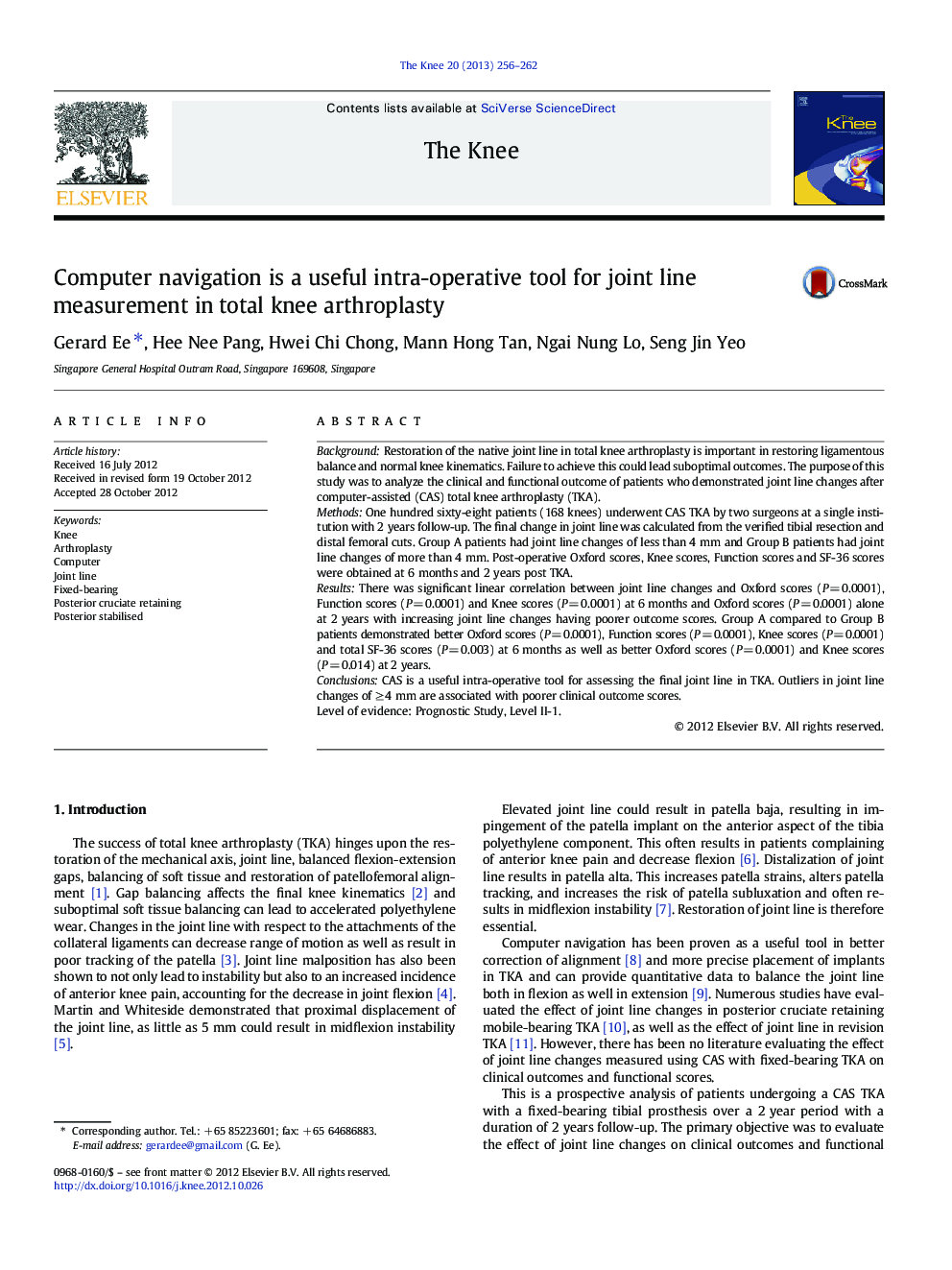| Article ID | Journal | Published Year | Pages | File Type |
|---|---|---|---|---|
| 4077631 | The Knee | 2013 | 7 Pages |
BackgroundRestoration of the native joint line in total knee arthroplasty is important in restoring ligamentous balance and normal knee kinematics. Failure to achieve this could lead suboptimal outcomes. The purpose of this study was to analyze the clinical and functional outcome of patients who demonstrated joint line changes after computer-assisted (CAS) total knee arthroplasty (TKA).MethodsOne hundred sixty-eight patients (168 knees) underwent CAS TKA by two surgeons at a single institution with 2 years follow-up. The final change in joint line was calculated from the verified tibial resection and distal femoral cuts. Group A patients had joint line changes of less than 4 mm and Group B patients had joint line changes of more than 4 mm. Post-operative Oxford scores, Knee scores, Function scores and SF-36 scores were obtained at 6 months and 2 years post TKA.ResultsThere was significant linear correlation between joint line changes and Oxford scores (P = 0.0001), Function scores (P = 0.0001) and Knee scores (P = 0.0001) at 6 months and Oxford scores (P = 0.0001) alone at 2 years with increasing joint line changes having poorer outcome scores. Group A compared to Group B patients demonstrated better Oxford scores (P = 0.0001), Function scores (P = 0.0001), Knee scores (P = 0.0001) and total SF-36 scores (P = 0.003) at 6 months as well as better Oxford scores (P = 0.0001) and Knee scores (P = 0.014) at 2 years.ConclusionsCAS is a useful intra-operative tool for assessing the final joint line in TKA. Outliers in joint line changes of ≥ 4 mm are associated with poorer clinical outcome scores.Level of evidence: Prognostic Study, Level II-1.
